My first night in Delhi’s Tibetan Quarter completely shattered my ideas about what’s “normal.” We ended up in a dark, showerless room with nothing but a small plastic jug to use instead of a tap. The floor hadn’t seen a mop since Krishna’s time. I wasn’t just hesitant to wash there but afraid to enter.
The bed was covered with a sheet the color of funeral ash from the cremation ghats of Varanasi (which, incidentally, we’ll get to later). The blanket—which I refused to use—looked like it had never been washed since the hotel’s “spiritual initiation,” if such a moment ever existed. I spread out my small travel towel and lay down, determined not to touch the thing that passed for bedding.
It was also bitterly cold. Just before sunrise, my freezing body gave in—I compromised and tucked my feet under the blanket. Morning couldn’t come fast enough.
Luckily, it did. We emerged into the Tibetan Quarter for breakfast. My friends Nastya and Mykola were visibly joyful and thrilled to return to the land they adored. And Kirill, always the urban explorer, had already disappeared into the alleyways and reappeared with a decent little café. Later, I would discover this uncanny gift of his—to find oases of comfort in the most unlikely places. It would come in handy more than once on this trip.
Barefoot in the Temple, Head in the Clouds
Our morning began in a local Buddhist temple. Monks sat cross-legged on the floor, chanting mantras that echoed across the modern hall. I got my first taste of what would become a ritual over the next two weeks: removing my shoes in every sacred place—no matter how far these spaces were from any Western hygiene concept.
Forgive me, dear reader, if I occasionally forget to remind myself: You are in India.
During a past trip to Israel, I remember nervously crossing into Palestine and being overwhelmed by the mess. But now, standing barefoot in an Indian temple, I realized Einstein’s theory of relativity applies here too. Everything is relative.
Turning the Wheel, Filling the Stomach
After spinning the prayer wheels (and likely, some karmic ones too), we followed Nastya’s suggestion and went for breakfast. I honestly don’t remember what we ate—it was definitely Tibetan—but I do remember the warmth of it after the chill of the morning.
Nastya and Mykola, with their theatrical flair and deep affection for India, were our guides—not just through the streets, but through layers of mythology, history, and belief. I remembered standing in the National Art Museum in Ubud just a month before, painfully aware of my ignorance about Indian culture. Now here I was, being led through the labyrinth by hand, words flowing freely, stories coming alive.
A Sacred Encounter: Gurdwara Bangla Sahib
Our spiritual trail’s first major stop was Gurdwara Bangla Sahib—one of the most important Sikh shrines in Delhi. This magnificent temple honors the memory of Guru Har Krishan, the eighth Sikh guru, who helped the city’s people during a 17th-century epidemic. The sacred Sarovar (pond) inside the temple grounds is believed to have healing powers.
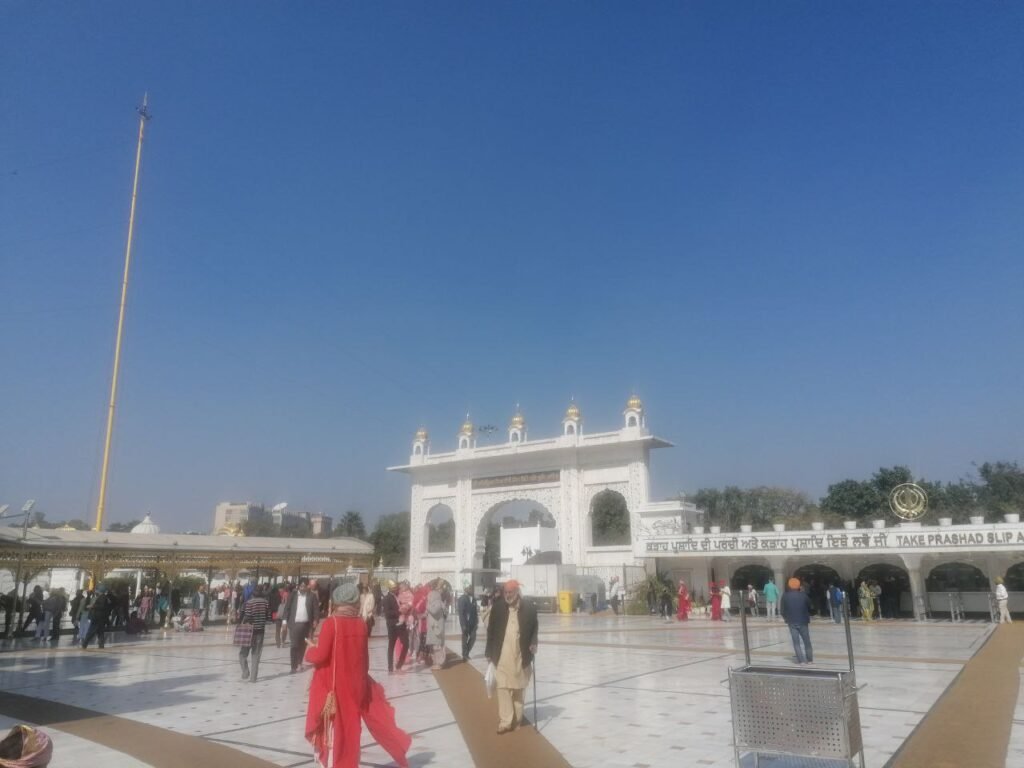

Meditative hymns fill the air inside the white-marble halls, and in the langar—Sikh community kitchen—volunteers feed thousands of people every day, regardless of their background or faith.
You won’t go hungry or be left out in India, especially if you understand the Sikh spirit of service. Nastya and Mykola ensured we didn’t just visit places—they ensured we understood them. It was as if they were trying to protect their beloved India from rash judgment, especially from a wide-eyed newbie like yours.
The Monkey God and the Number 108
Next, we dove into the chaotic heart of Old Delhi—where rickshaws, bazaars, and honking horns make up the city’s soundtrack—and found Hanuman Temple, dedicated to the monkey god of strength and devotion.
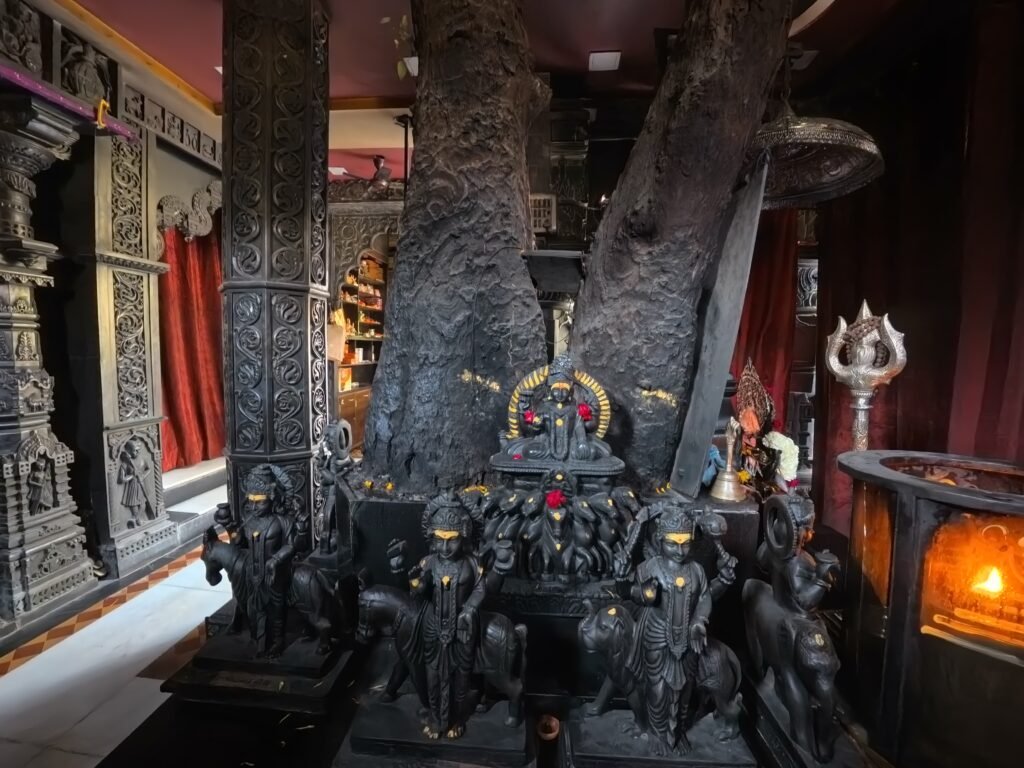
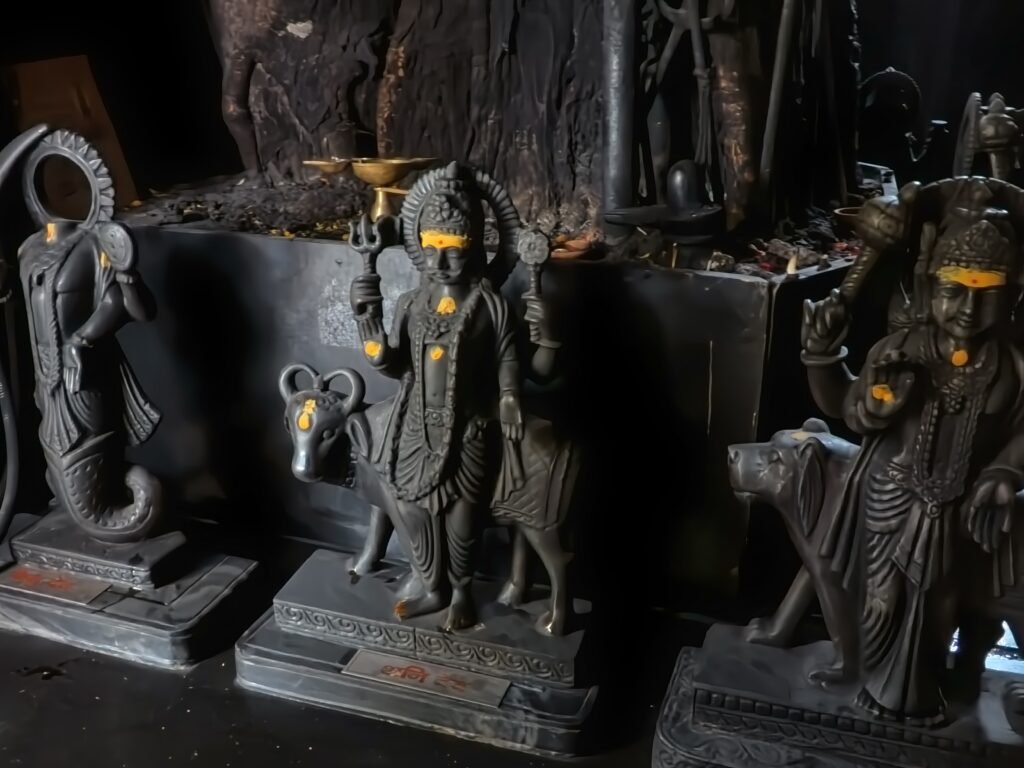
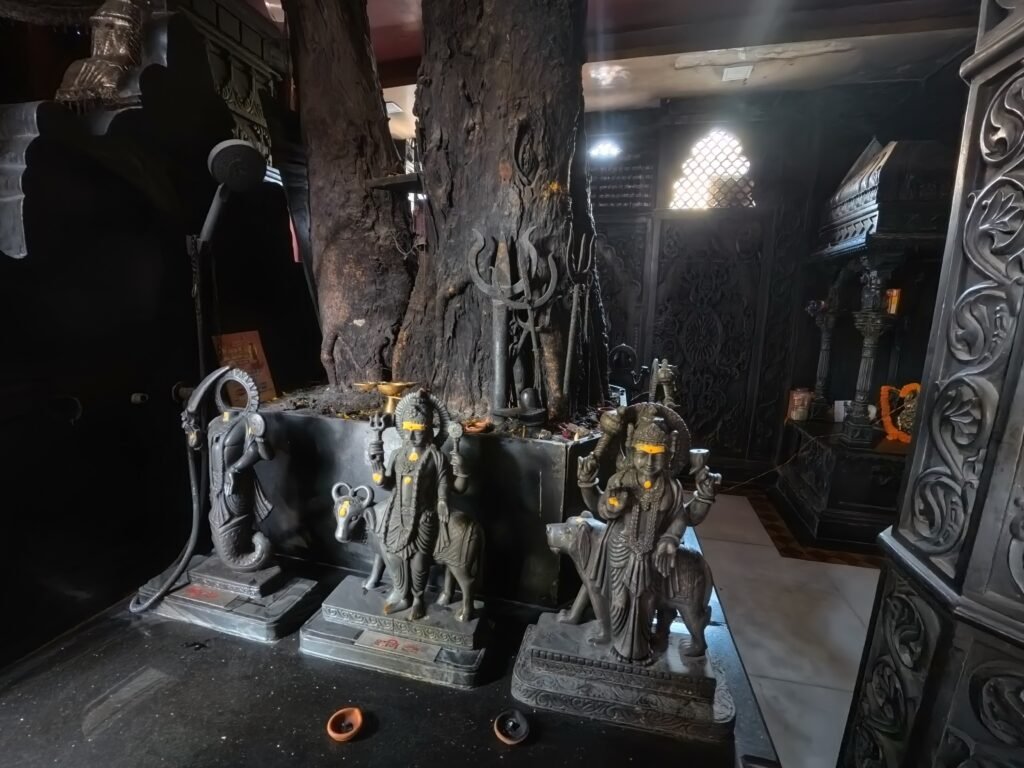
The temple’s most striking feature is a 33-meter (108-foot) tall statue of Hanuman, glowing in bright orange. The number 108 is sacred in Hinduism—there are 108 beads on a mala (prayer necklace), and 108 Upanishads (sacred texts), and ancient scriptures say the Earth is 108 times the diameter of the sun away from it.
Why am I telling you this? As some readers might remember, my musician friends go by the name Tabor 108. In India, nothing is random. Everything is connected. And so it was with our journey.
The temple entrance is shaped like a demon’s mouth—you literally walk in through its jaws. It was loud, crowded, and energetic, but we didn’t stay long. The temple was unexpectedly closed, but a kind souvenir seller nearby allowed us to peek inside. In return, we stocked up on tiny images of gods before heading to an even stranger encounter.
Zuni: Death in Human Form
We were off to meet Zuni, a reclusive woman and old friend of Mykola’s. I don’t remember her real name—just the presence she carried.
We met in Lodhi Gardens, a quiet, green oasis in the middle of Delhi. Among trimmed lawns and flowering bushes rise the crumbling tombs of 15th-century sultans. Ancient palm trees line the paths like pillars in a Roman forum. For a moment, you forget you’re in India.
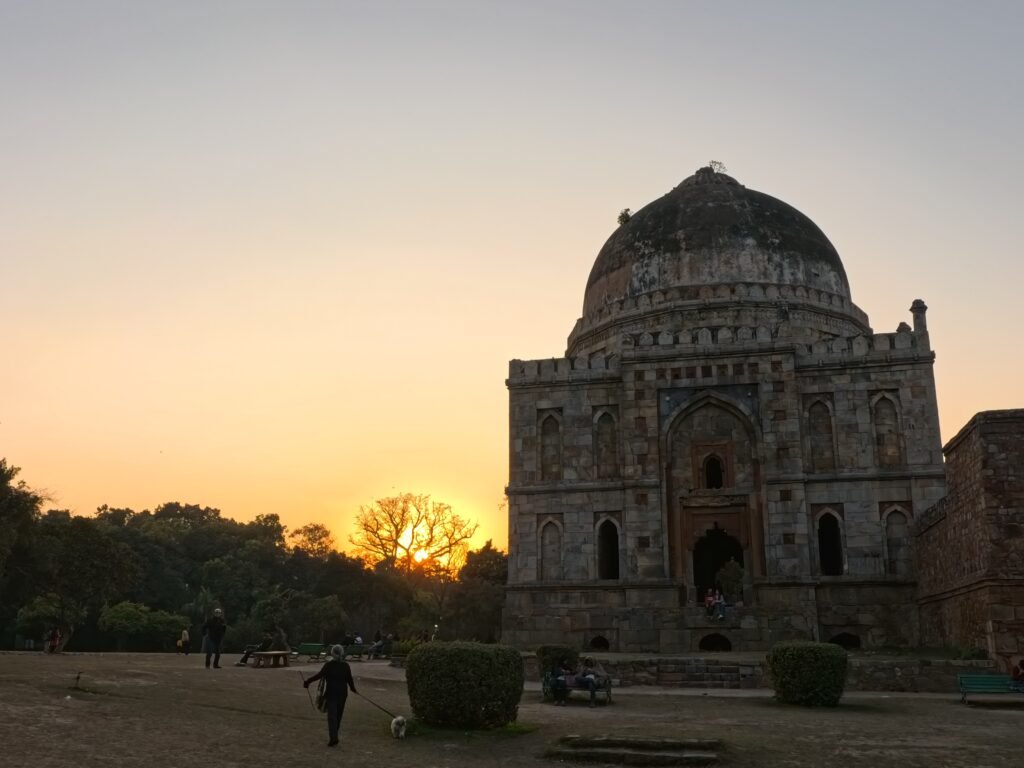
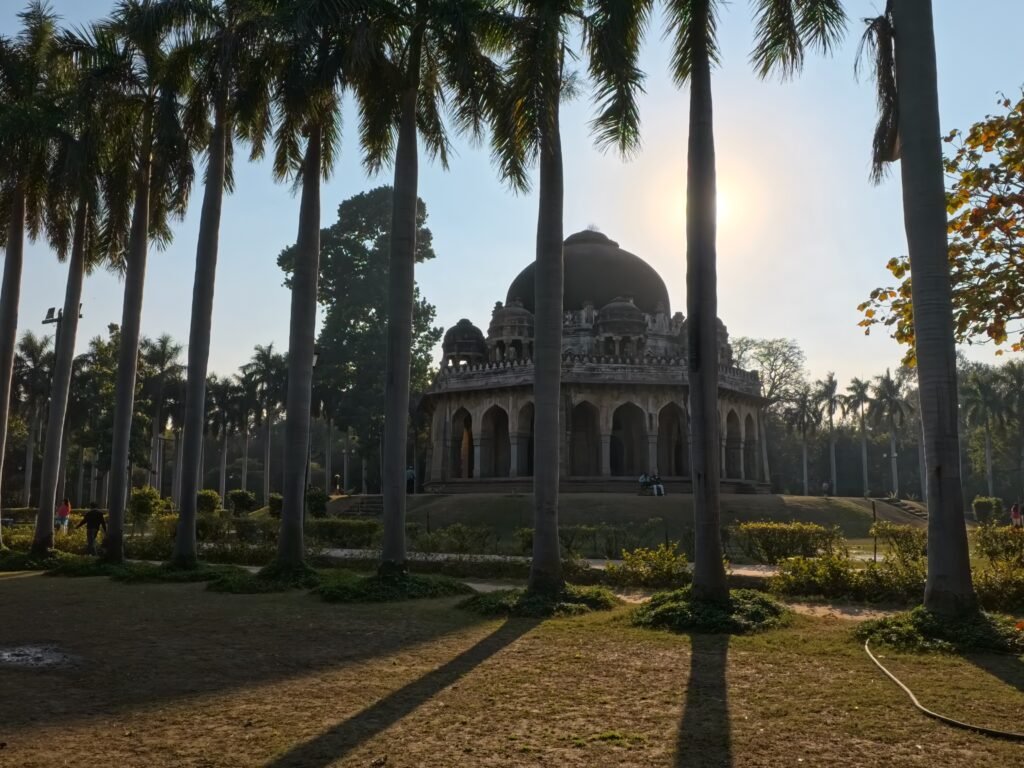

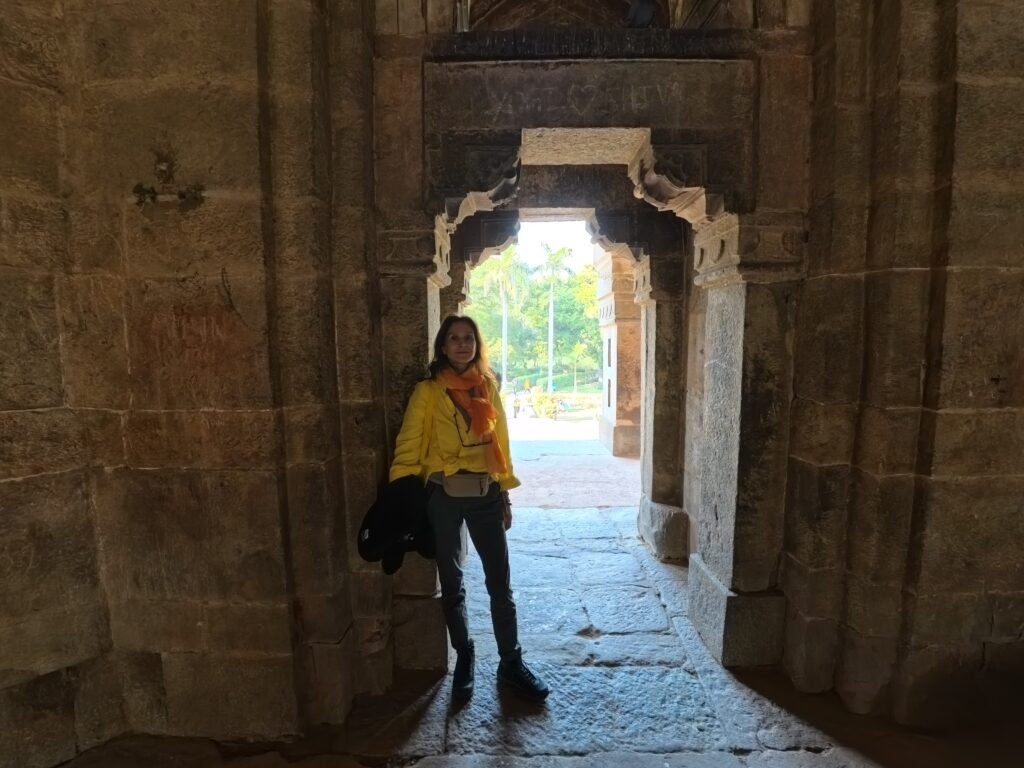
Then she appeared.
Zuni arrived accompanied by a teenage son and a visiting shaman from Altai. She wore a black cloak reminiscent of a monk’s robe, with a scarf covering her head completely. She walked with a cane that looked more like a pilgrim’s staff. Her icy blue-gray eyes pierced straight through you. If there was ever a person who belonged among ancient mausoleums—it was her.
Zuni had spent years near Varanasi’s burning ghats, absorbing death’s energies.
Mykola greeted her warmly while the rest of us… reacted differently. Nastya kept her distance. Kirill fell into a deep silence. I just tried to make sense of it all.
To her credit, Zuni knew the effect she had on people. She carried herself with grace and clarity. According to Mykola, she once told him not to stay near her too long—or he’d lose his connection to the living world, to the theater of life. She works with lost souls, unresolved grief, and the forgotten dead—often helping fellow Russians who find themselves in spiritual or emotional crises.
She was, in short, a conduit between worlds.
As we parted, this incarnation of death surprised us with a motherly piece of advice:
“You should think about having children,” she said gently.
Only in India could such a message come from a woman steeped in death.
And in just a few days, we’d arrive in Varanasi, where the mystery of life and death would take on even more profound meaning.
But before that—Vrindavan and Govardhan await. The land of Krishna is calling.
Articles in This Series
🌍 India Travel & Spiritual Journey Series
- The Word Was with God – How India Found Me
A personal and spiritual awakening begins in India’s heartland. - Delhi Shock – My First Night in India
Raw impressions from the chaotic, vibrant capital. - The Divine Heart of India – Vrindavan, Krishna, and Rama
A deep dive into sacred cities and mythic lore. - Madness or Faith? A Pilgrimage to Maha Kumbh Mela
Encountering the world’s largest religious gathering. - Exploring Hinduism’s Greatest Festival – Maha Kumbh Mela 2025
A guide and reflection on faith, crowds, and ritual. - To Be or Not to Be: On the Eve of the Great Bathing
Facing existential questions on the threshold of the sacred. - Where the Fires Burn – First Encounters with Varanasi
A visceral arrival in India’s most mystical city. - Between Life and Flame – Tales from the Ganges
Reflections on death, devotion, and the river’s eternal flame. - Journey Through Varanasi – Saturn, Sound, and Spirit
Myths, music, and meaning in India’s spiritual capital. - Puttaparthi: A Dream Made Real
A village transformed by faith: the story of Sathya Sai Baba’s birthplace. - At the Edge of the Universe – A Journey Through Puttaparthi
A cosmic path of devotion, silence, and the soul’s unfolding.

